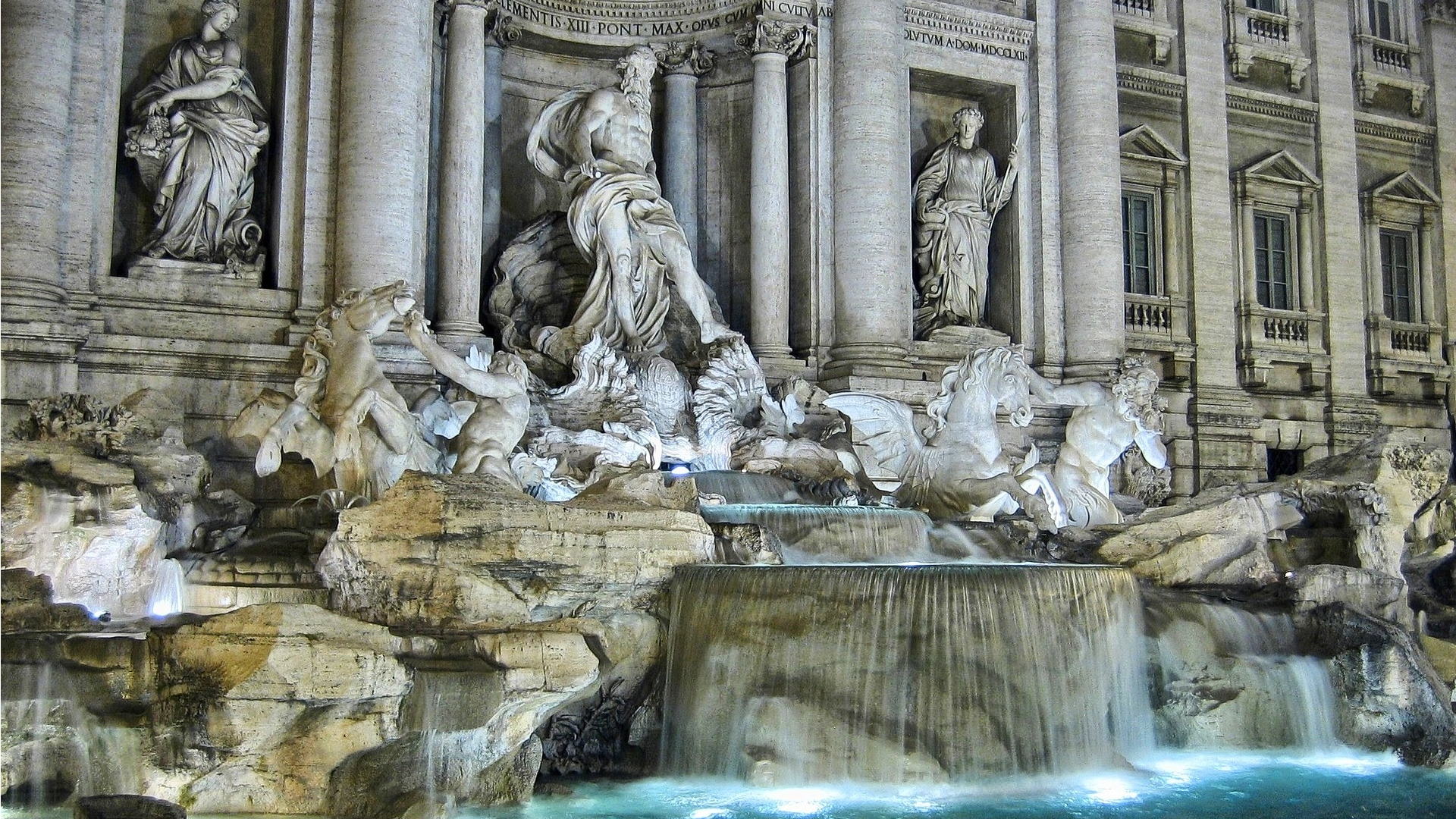
Además de sus monumentos, sus palacios y sus iglesias, una ciudad también se compone del reflejo de sus historias y de la vida que pasa por ella. Una vida que, en Roma, siempre ha estado marcada por ritos, fiestas, aniversarios, celebraciones: un denso calendario de citas fijas que, con su carga de tradiciones, representaban una oportunidad de reflexión, tanto religiosa como civil, de encuentro, de compartir y de divirtiéndose, temporada tras temporada.
Si algunos, como dicen, no han resistido el olvido del tiempo o han perdido parte de esa sensación de perfecto asombro que supieron transmitir a los romanos y a los numerosos visitantes de la ciudad, otros aún hoy gozan de excelente salud y tienen incluso enriquecerse con nuevos elementos. Y otros, aunque hayan nacido en años más recientes, ya han entrado de lleno en las "tradiciones" modernas y contemporáneas de la ciudad.
Por eso, para vivir Roma plenamente y sentirte dentro de su historia, mes a mes te contamos algunos de los días y momentos especiales de la ciudad, de hoy y de ayer, los acontecimientos más sentidos o esperados, o incluso simplemente los más curiosos.
-
Cumpleaños de Giuseppe Gioachino Belli, 7 de septiembre
-
El armisticio y la batalla por Roma, del 8 al 10 de septiembre
-
El nombre de María, 12 de septiembre
-
La ruptura de Porta Pia y la toma de Roma, 20 de septiembre
-
El pozo y la efigie milagrosa, 27 de septiembre
Cumpleaños de Giuseppe Gioachino Belli, 7 de septiembre
Sus 2.279 sonetos en dialecto romano se encuentran entre los testimonios literarios, lingüísticos, históricos y antropológicos más importantes de Roma, un "monumento" a la plebe de la ciudad de la que Giuseppe Gioacchino Belli fue el mayor intérprete. En esta inmensa producción, que permaneció prácticamente inédita hasta la muerte del poeta en 1863, el dialecto se convirtió en la herramienta más eficaz para revelar las inconsistencias y contradicciones de la sociedad romana, incluidos el mal gobierno, la pereza y la ignorancia. La Roma de los Papas se cuenta así con una extraordinaria riqueza de soluciones estilísticas y formales, cómicas y trágicas, irónicas y dramáticas, en una poesía vibrante de colores y acentos que aún hoy conserva todo su encanto. El "poeta de Roma" nació el 7 de septiembre de 1791 en via dei Redentoristi, en el Barrio de Sant’Eustachio. Cada año, con motivo de su cumpleaños, el Centro de Estudios Giuseppe Gioacchino Belli organiza un encuentro-espectáculo en lugares vinculados a su vida o a su obra, por ejemplo el Palazzo Poli, donde Belli vivió sus años más felices y donde recitó sus sonetos “Inmigrantes ilegales” en el salón de la princesa Zenaide Wolkonski, despertando la admiración de Gogol. Tradicionalmente se coloca un homenaje floral al pie de la fuente-monumento en el corazón de Trastevere, construida en 1913 para honrar al mayor poeta romano en el cincuentenario de su muerte.
El armisticio y la batalla por Roma, del 8 al 10 de septiembre
En los hogares italianos, la noticia del fin de la alianza con la Alemania nazi llega en primicia a través de los micrófonos de Radio Algeri, de la voz del general Eisenhower, y luego es confirmada una hora más tarde por el general Badoglio. Son las ocho de la tarde del 8 de septiembre de 1943: la ilusión de que el armisticio significa el fin de la guerra durará sólo un momento y Roma pronto se verá abandonada a sí misma. Al amanecer, una larga procesión de sesenta coches negros cruza la ciudad acompañando al rey, a la familia real, al gobierno y a los jefes militares en una apresurada huida hacia Pescara y luego hacia Brindisi. Mientras tanto, las fuerzas alemanas de la Wehrmacht ya están desplegadas ordenadamente en el sur y el norte de Roma y rápidamente abrumarán a los soldados italianos que se quedan sin órdenes precisas y coherentes. La batalla que envuelve a Roma desde la misma tarde del armisticio afecta a las zonas de Montagnola, EUR, la Basílica de San Paolo y Garbatella. El 10 de septiembre tuvo lugar el último intento extremo de defender la ciudad en Porta San Paolo: también aquí, como en los días anteriores, las unidades militares aún operativas estaban flanqueadas por civiles mal armados, que llegaron espontáneamente u organizados por los anti- partidos fascistas, que opusieron una resistencia heroica pero en vano a las tropas alemanas. Cada año, en el aniversario del armisticio y de la batalla por la defensa de la ciudad, considerado el verdadero debut de la Resistencia italiana, el Presidente de la República, los representantes de las instituciones y las autoridades de la ciudad renuevan su homenaje a todos los italianos que Del 8 de septiembre de 1943 a abril de 1945 luchó por el renacimiento de una Italia nueva, libre y democrática, colocando una corona de laurel en las placas conmemorativas de Porta San Paolo y en el Monumento del Parque de la Resistencia.
El nombre de María, 12 de septiembre
Fuente de luz, gota de mar, señora, primera lluvia de la estación: las numerosas e inciertas hipótesis sobre su etimología y su significado se ven contrarrestadas, para los creyentes, por una certeza inquebrantable: si se invoca con devoción, el nombre de María es una fuente. de salvación, incluso en la batalla. Y es precisamente una batalla épica la que consigue que el culto al santo nombre de la Virgen María, inicialmente celebrado sólo en la diócesis española de Cuenca, sea promovido en la última parte del siglo XVII a una celebración de toda la Iglesia. Estamos en el verano de 1683 y Viena, asediada por los turcos bajo las órdenes del gran visir Kara Mustafa, está ahora al borde de la rendición. Luego, el 12 de septiembre, las tropas del emperador Leopoldo I de Austria y del rey de Polonia Jan Sobieski lanzaron la contraofensiva que condujo a la derrota del ejército otomano. Una victoria inesperada, que el Papa Inocencio XI atribuye a la intercesión de la Virgen, la verdadera líder de las fuerzas cristianas, a quien agradecer con una gran celebración litúrgica universal. Poco después nació también en Roma la Cofradía del Santísimo Nombre de María, entre cuyos miembros se encontraban el pontífice y Leopoldo de Austria. Los hermanos se instalaron primero en la iglesia de Santo Stefano del Cacco y luego en la antigua iglesia de San Bernardo, que pronto fue demolida para construir un nuevo edificio. Con vistas a la columna de Trajano como a su "casi gemela" Santa Maria di Loreto, la hermosa iglesia del siglo XVIII del Santissimo Nome di Maria en el Foro de Trajano nos recuerda, en su dedicación y decoración, el día especial de la Virgen María.
La ruptura (breccia) de Porta Pia y la caída de Roma, 20 de septiembre
Por una de esas curiosas coincidencias de la historia, es precisamente el día en que los antiguos romanos celebraban el Natalis Romuli, el nacimiento del héroe fundador de la ciudad, cuando comienza una nueva era para Roma. A las 10.35 horas del 20 de septiembre de 1870, una bandera blanca ondea en la cúpula de San Pedro y en el Castillo de Sant'Angelo: es la señal de la rendición ordenada por el Papa Pío IX después de que el fuego de artillería del general Raffaele Cadorna hubiera abierto una apertura de aproximadamente 30 metros en las Murallas Aurelianas, junto a Porta Pia, en uno de los puntos militarmente más vulnerables de la adormecida Roma Papal. Las tropas papales opusieron poca resistencia y la batalla ciertamente no puede considerarse trascendental: pocos murieron en ambos bandos. Sin embargo, el cambio que generó fue trascendental: después de más de un milenio, el poder temporal de los papas terminó y finalmente se logró la unidad del País. Pocos días después un plebiscito popular sancionaría la anexión de Roma y Lacio al Reino de Italia y en febrero del año siguiente la Ciudad Eterna sería proclamada oficialmente Capital. El aniversario de la toma de Roma se celebró como fiesta nacional hasta 1930, cuando fue abolido tras la firma de los Pactos de Letrán. Más de 150 años después, conserva sin embargo su profundo valor histórico y simbólico y figura entre los acontecimientos decisivos que marcan una transición de época y de mentalidad, con el nacimiento de la conciencia del carácter laico del Estado.
El pozo y la efigie milagrosa, 27 de septiembre
Un altísimo número de iglesias, edículas y representaciones, milagros, prodigios y fiestas litúrgicas atestiguan la difusión e intensidad de la devoción mariana en Roma, desde los tiempos más remotos. La ciudad tiene incluso su propia "pequeña Lourdes", cuya fama se remonta a la Edad Media. Un agua considerada milagrosa todavía brota hoy de un grifo en una de las capillas de la céntrica iglesia de Santa María en Via, a pocos pasos de via del Corso y de la galería Alberto Sordi. Se trata de la capilla de la Madonna del Pozzo, que en 1256 todavía era un simple establo en el palacio del cardenal Pietro Capocci. La noche del 26 al 27 de septiembre de ese año, el cardenal fue despertado por los alarmados llamados de sus sirvientes, asustados por el repentino e imparable desbordamiento de agua de un pozo. En el establo inundado, una imagen de la Virgen pintada sobre una losa de pizarra flota sobre el agua, que parece escapar a cualquier intento de recuperarla. Es el propio cardenal quien logra la empresa, después de reunirse en oración, y sólo entonces las aguas se calman retirándose al pozo. Un milagro así no puede pasar desapercibido, por lo que el cardenal, tras obtener la aprobación del Papa Alejandro IV, hizo construir con sus propios fondos una capilla alrededor del pozo milagroso. El propio Papa participa en la solemne procesión que acompaña a la venerada imagen hasta su nuevo emplazamiento. Quien aún observa desde el muro principal de la capilla a quienes se acercan a rendirle homenaje o a beber un sorbo del agua del antiguo pozo.
Octubre en Roma. Cita con la tradición (de ayer y de hoy)
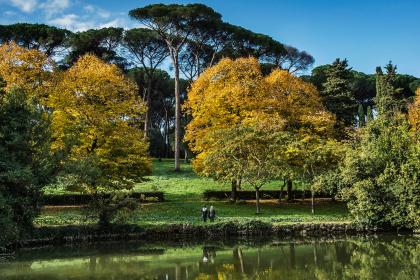
I giorni e i momenti speciali per vivere appieno Roma e la sua storia
Noviembre en Roma. Cita con la tradición (de ayer y de hoy)
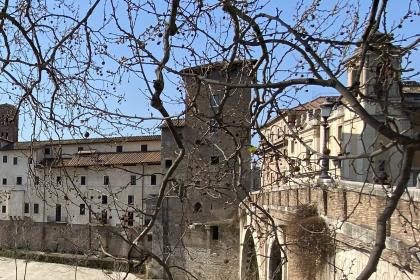
El monumento en honor a Giuseppe Gioachino Belli
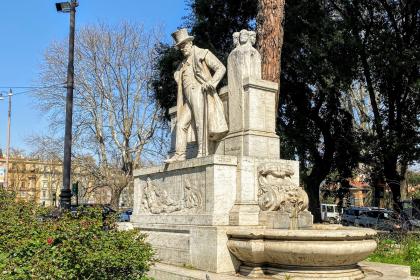
 Condividi
Condividi
Palacio Poli - Fuente de Trevi
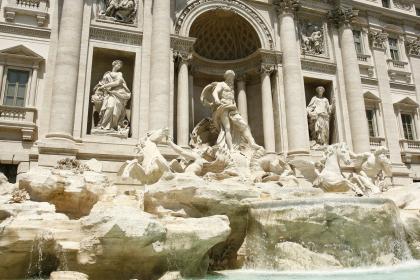
 Condividi
Condividi
Puerta de San Paolo
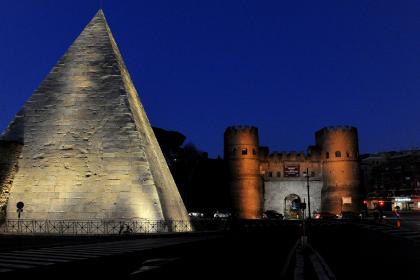
 Condividi
Condividi
Pirámide Cestia
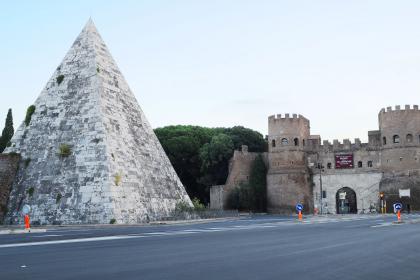
 Condividi
Condividi
Iglesia del Santísimo Nombre de María en el Foro Trajano
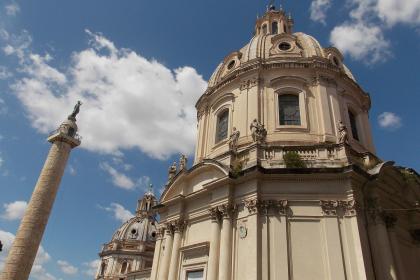
 Condividi
Condividi
Mercado de Trajano
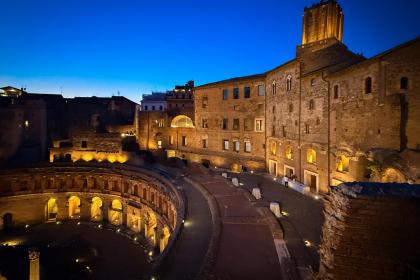
 Condividi
Condividi
La Columna Trajana
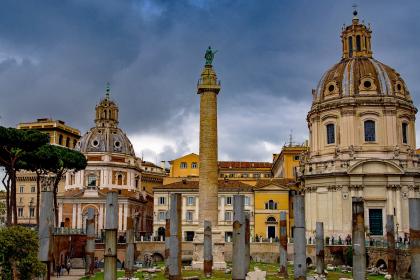
 Condividi
Condividi
Iglesia de Santa Maria de Loreto en el Foro di Trajano
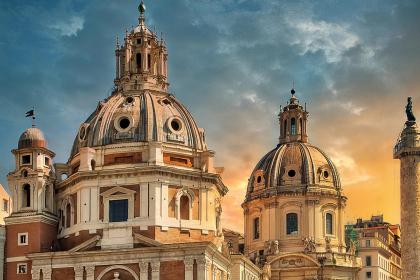
 Condividi
Condividi
Puerta Pía y el Museo Histórico de los “Bersaglieri”
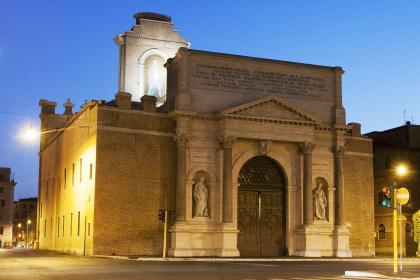
 Condividi
Condividi
Murallas aurelianas
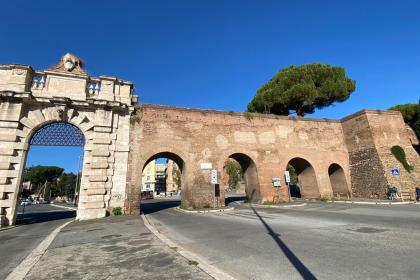
 Condividi
Condividi
The Madonnelle of Rome
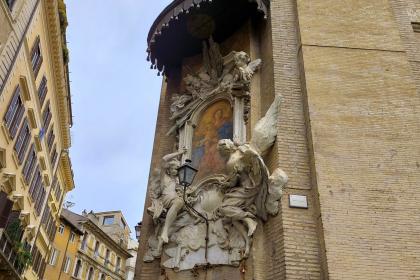
The charming street shrines dedicated to the Virgin Mary and their many stories
Iglesia de Santa Maria in Via - Madonna del Pozzo
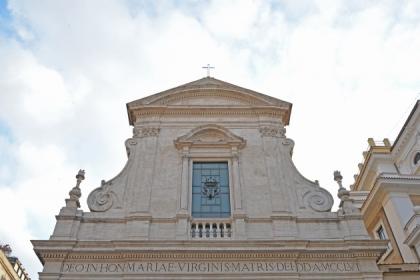
 Condividi
Condividi











































